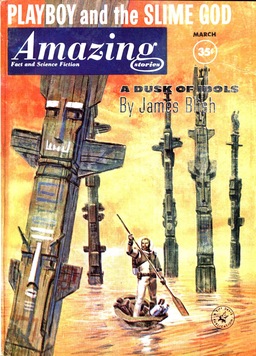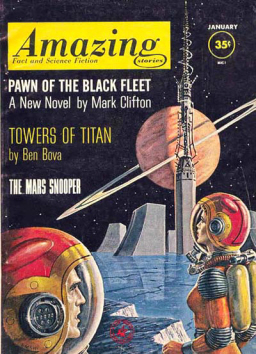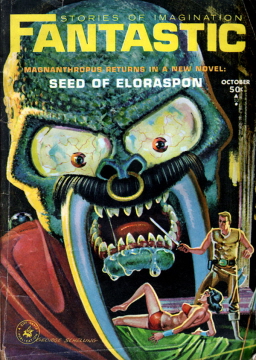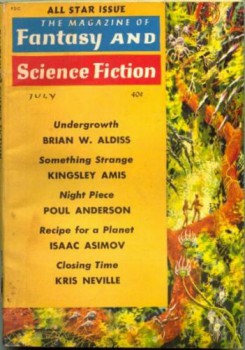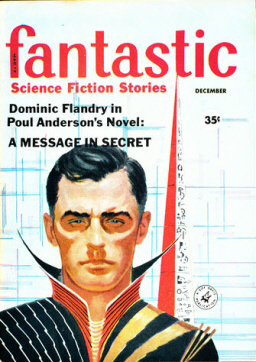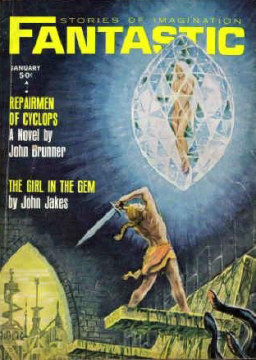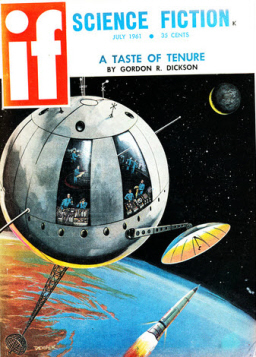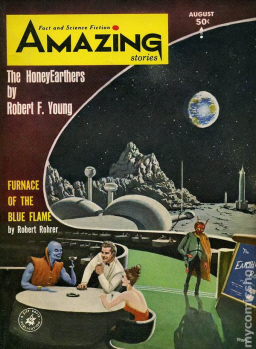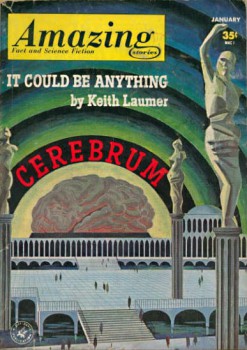Amazing Science Fiction, December 1959: A Retro-Review
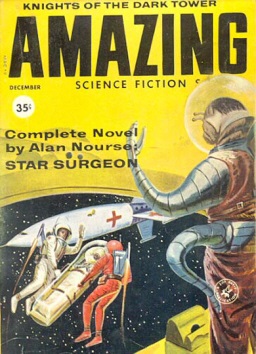 Here’s an issue from very early in Cele Goldsmith’s tenure (and very early in my life, I might add – this issue presumably appeared about a month after I did). It was in fact the first issue of Goldsmith’s second year at the helm.
Here’s an issue from very early in Cele Goldsmith’s tenure (and very early in my life, I might add – this issue presumably appeared about a month after I did). It was in fact the first issue of Goldsmith’s second year at the helm.
The cover is by Leo Summers, illustrating (not too accurately) Alan Nourse’s novel Star Surgeon, which appears complete in this issue. Above the magazine title is the title of another story, “Knights of the Dark Tower,” without mention of the author, as was Amazing’s curious habit. Interior illustrations are by Summers, Virgil Finlay, and Mel Varga (with one uncredited).
The editorial, by Norman Lobsenz, celebrates Walter X. Osborn, a man living in the Philippines who was then 85 and had been reading Amazing since its beginning. Osborn’s favorite story? Possibly “The Green Man Returns,” by Harold M. Sherman from December 1947. His least favorite? The Shaver mysteries.
S. E. Cotts’ book review column, The Spectroscope, is extremely short. The one novel covered is Seed of Light, by Edmund Cooper, which Cotts criticizes for being too ambitious. But high praise goes to two anthologies, The World That Couldn’t Be, edited by H. L. Gold, and Mary Kornbluth’s Science Fiction Showcase, which she put together with Fred Pohl’s help (Pohl insists she picked the stories, though – he just helped clear the rights) after Cyril Kornbluth’s death.
The letter column features Bob Anderson, John Hitt, Ray Hahn, Jacqueline Brice, James S. Veldman, Paul Matthews, and Bobby Gene Warner (no names familiar to me, though Warner, as I recall, showed up in another Amazing lettercol from this period). No real controversies. Lots of Praise for Murray Leinster’s “Long Ago, Far Away”.
There is one “Complete Novel”, and 6 short stories, one of them a very brief vignette.
